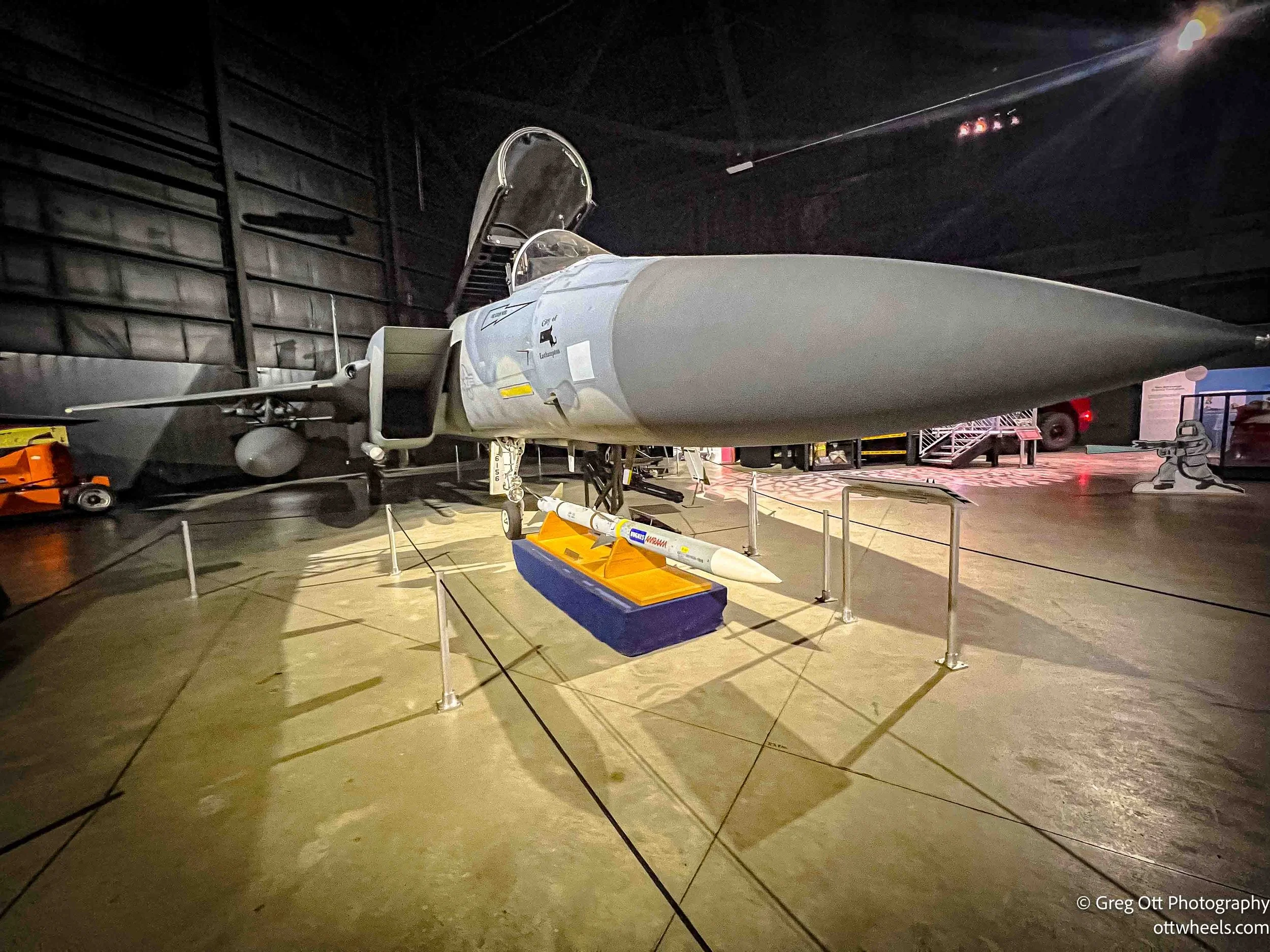Dayton: Flight, Invention, and a Remarkable Tattoo
I stayed the night at John Bryan State Park. I was up around 7:30, made breakfast, and started packing up for the day. Most of the campground was still quiet—people sleeping in. The two women who tried to smoke me out hadn’t surfaced yet. I was running low on water, so before leaving, I pulled up next to the potable water pump to top off the tank. The spigot had two outlets, and the one I’d connected my hose to wasn’t flowing. After about five minutes of fiddling around, I realized I had to pull down the nozzle to divert water to the lower outlet. Even then, the flow was very slow. It took nearly 20 minutes to finish filling the remaining portion of my 32-gallon tank. Not how I planned to start the day, but at least I left with a full tank of water.
I saw gas priced at $2.63 and needed to fill up. I was baffled at how different the price of gas can be even within 10 minutes of different stations. This was 90 cents cheaper that what I saw yesterday.
Wright Brothers Museum
Today’s stop was the Wright Brothers Museum in Dayton, Ohio—part of the Dayton Aviation Heritage National Historical Park. This isn’t just a museum—it’s a portal into one of the most astonishing chapters of human ingenuity.
I started with the orientation film, which did a good job of capturing the sweeping arc of the Wright brothers’ story—from their early curiosity and mechanical tinkering to the moment they lifted into the air at Kitty Hawk. The film highlighted how their Dayton roots and experience running a bicycle shop gave them the tools and mindset to tackle the dream of powered flight.
Walking through the exhibits, I was struck by how immersive and thoughtfully arranged everything was. There were artifacts from their shop and home, blueprints and sketches, and multimedia displays that broke down their innovations: understanding lift and drag, designing effective propellers, and achieving control through three-axis movement—yaw, pitch, and roll. These weren’t just mechanical puzzles—they were entirely uncharted territory at the time.
One recreated storefront especially stood out to me—an old-timey facade with a wooden sign and window display that brought 1890s Dayton to life. It reminded me that this wasn’t just about planes; Dayton was a full-blown invention capital in the late 19th century. The National Cash Register Company was founded here, and the pop-top soda can, electric wheelchair, and even the hydraulic pump had roots in Dayton innovation.
After exploring the main museum, I joined a tour of the restored Wright Cycle Company building. The brothers didn’t just repair bikes—they were designing, assembling, and modifying them right in this modest brick structure. It’s humbling to stand in a space where the early pieces of powered flight were being prototyped under the guise of bicycle repair.
On the tour, I ran into a couple who looked oddly familiar. Turns out, Emily and Horace were camping beside me the night before in the state park. Small world. They’re on a cross-country trip headed west to Montana in a car with a tent. We started swapping stories—mine about nine months traveling in a Subaru before upgrading to the van, and theirs about life on the road.
Horace had a tattoo that caught our guide’s attention: a stylized map of the world. When asked about it, he said he’d visited all 197 countries and got the tattoo to commemorate that journey. Born in Hong Kong, he’s been traveling his whole life. Emily works at a ski resort in New York. I've never skied New York… maybe it's time.
Before heading to my next stop—the National Museum of the U.S. Air Force—I paused outside and took a photo of the old bike shop. Just a simple building on a quiet Dayton street. But from inside those walls, the world took flight.
National Air Force Museum
I got to the National Museum of the U.S. Air Force around 12:30pm and stayed until they closed at 5. I thought skipping the first two halls would give me enough time to see everything else. It didn’t.
I started with the Korean War era and kept moving forward in time. I was surprised how little I actually knew about the Korean War. I hadn’t realized how much jet technology changed during that time—air-to-air missiles were introduced, and there was a lot of improvisation just to keep planes flying in brutal winter conditions. It felt like a bridge between WWII and the Cold War, but with its own unique challenges.
As I moved through the exhibits, I saw a bunch of aircraft I’d never heard of. Some came straight out of a prototype lab and never made it to the production. I was especially caught off guard by how early stealth technology was being developed. I always thought it came out around the Gulf War, but clearly, the research started much earlier.
The size of some of the bombers was hard to take in. The B-1 and B-2 are massive, and even with all the information displayed around them, it was hard to wrap my head around the scale and complexity of those aircraft. I spent time with the F-22 and F-35—just trying to understand what made them so advanced.
One of the quieter exhibits that caught my attention was about the development of GPS. It’s easy to take for granted now—just tap your phone and get directions—but seeing the early military origins of the system was eye-opening. GPS was initially developed for precision in military operations, allowing aircraft, ships, and missiles to navigate with unprecedented accuracy. Over time, that same technology filtered into everyday life—changing how we drive, hike, fly, and even take photos. It’s hard to overstate how much of modern life quietly depends on it. Standing in front of that display, I realized how something so invisible has completely reshaped the way we move through the world.
At one point, a friend texted me to say he had worked on the F-15A that’s on display there. It actually took me nearly an hour to find it, tucked away toward the back. I sent him a photo once I found it. That small connection gave the whole visit a different kind of meaning.
The missile exhibits were also something else—towering ICBMs that filled the vertical space in the hangars. You know the theory of these weapons, but standing next to one is a different kind of experience.
Before leaving, I toured the Presidential aircraft. Walking through the old Air Force One planes was fun. It felt like stepping into a slice of Cold War history—rotary phones, ashtrays, and all.
In the end, I was there for over four hours and barely scratched the surface. There were entire sections I didn’t even get to. It’s the kind of place I’ll need to visit again—maybe on a weekday when it’s quieter, and with more time to take it all in.
The museum closed at 5, I walked back to the van, made myself an espresso and drove to my Harvest Host site. It was about 15 minutes from the Air Museum on a busy street. My host was very frienly and was preparing for a party on the weekend. Her neighbor was there help fix the fence. She, directed me to a spot beside their large garage and showed me the extension cord where I could plug into for 15A power.



















